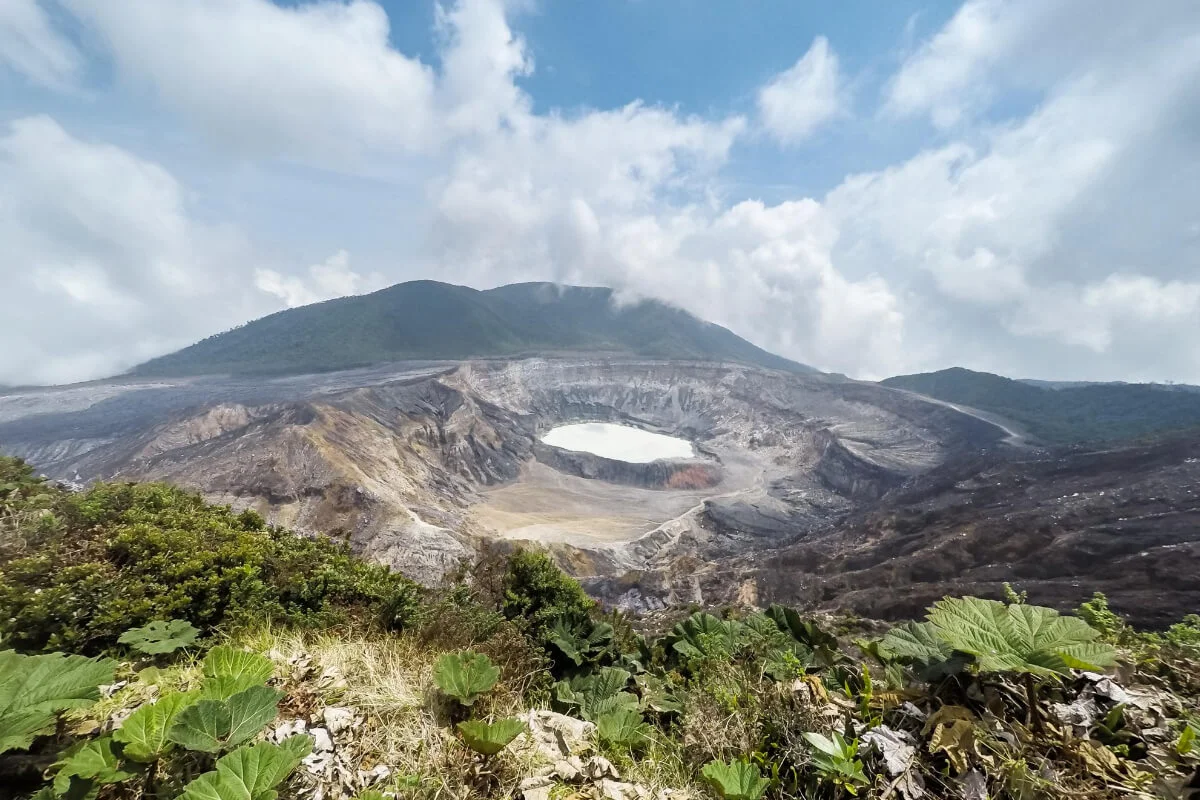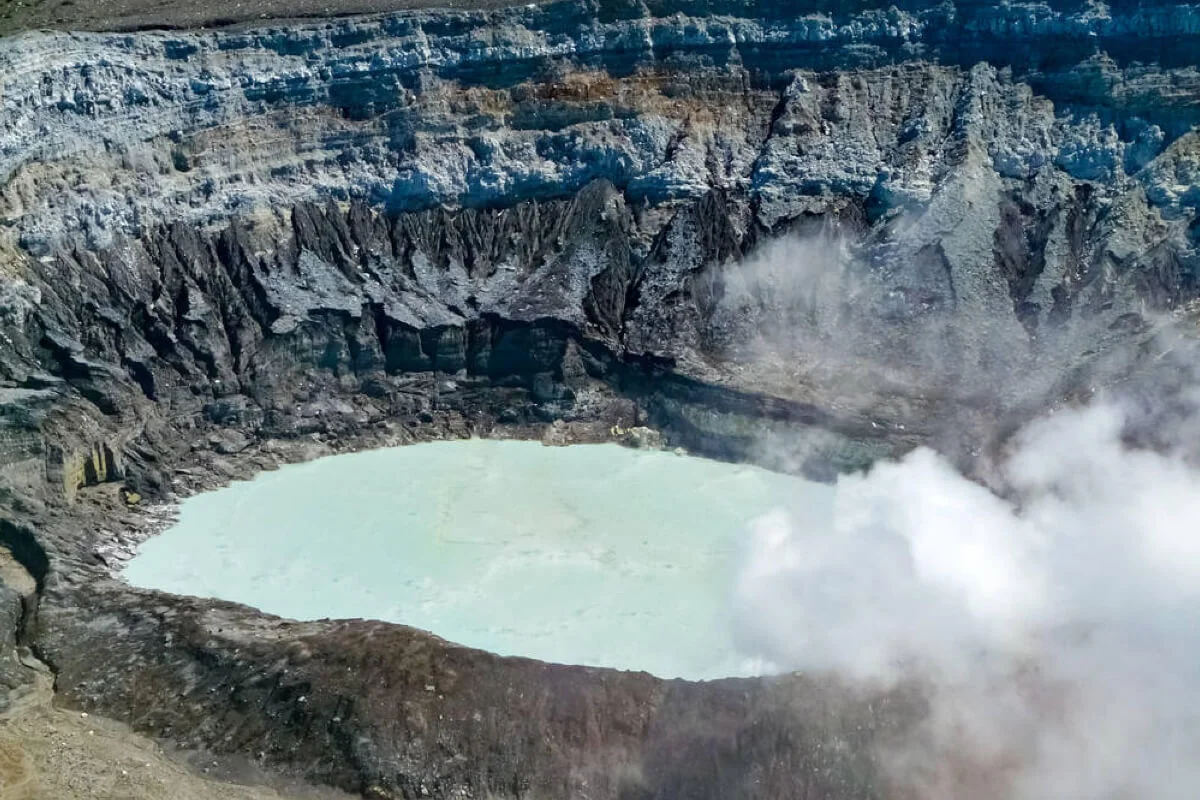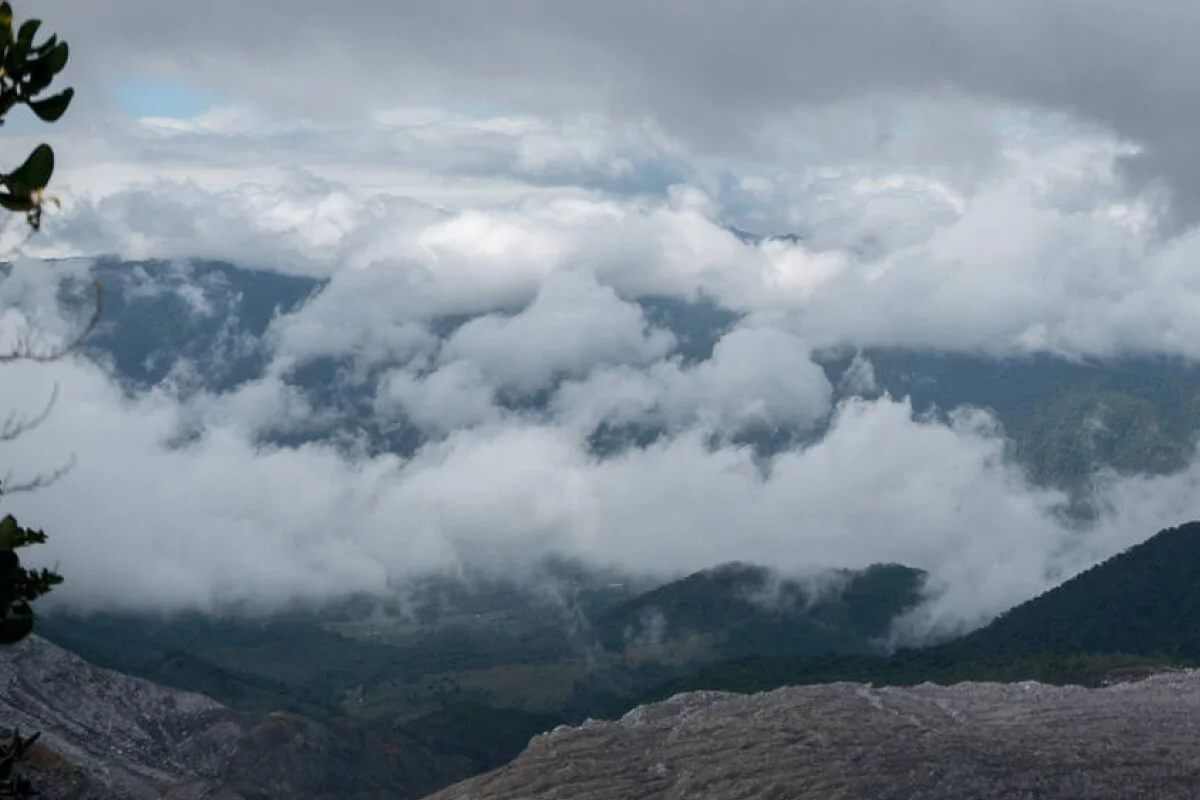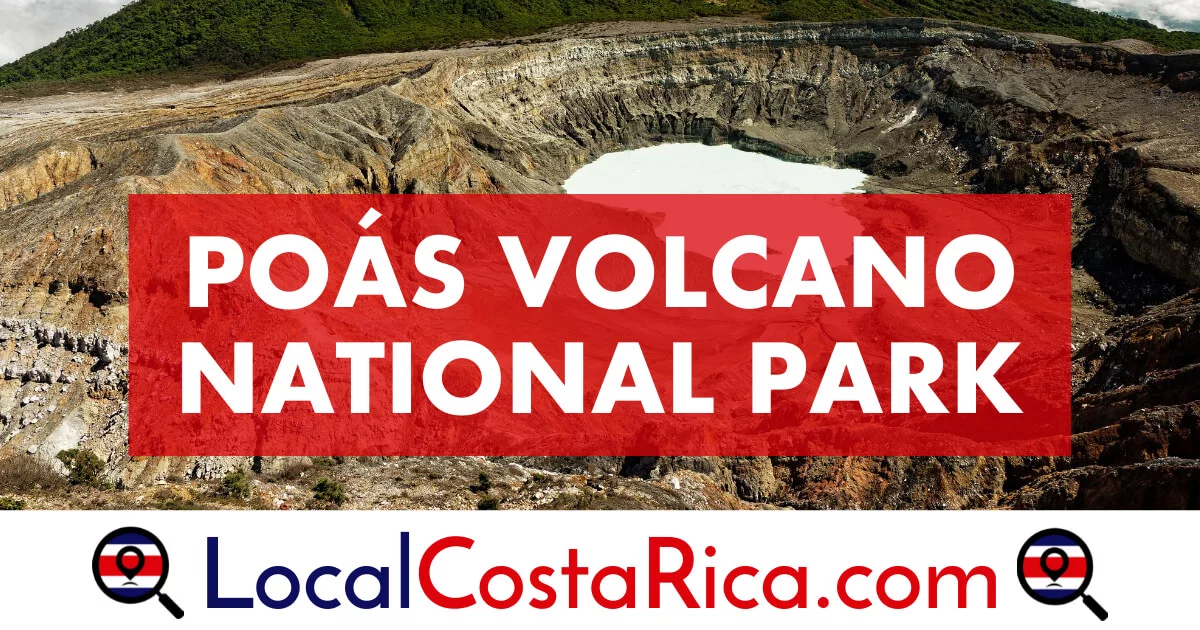Poás Volcano National Park is located in Costa Rica and has become famous due to its beautiful landscapes, an active volcano, and wildlife. Over the years, the park has been open and closed due to active eruptions. The last eruption occurred in 2018. In the chance this park is open, here are some great reasons to visit along with some fun things to do.
Why You Should Visit Poás Volcano National Park
 Poás Volcano National Park Crater View
Poás Volcano National Park Crater View
Poás Volcano National Park is located in the Alajuela province and is accessible by most major cities as it is in close proximity to the capital city of Costa Rica, San José. It’s about 1.5 hour drive (50km) from San José. If you live in San José, it’s also a perfect day trip if you haven’t had the chance to visit yet.
Poás Volcano National Park is one of Costa Rica’s most popular national parks because of its famous geysers and the famous live active volcano, that recently erupted in 2018. Located at an elevation of 2,000 meters above sea level, visitors get a rare opportunity to see a real live active volcanic crater. The Poás Volcano National Park crater is said to be one of the biggest worldwide. Visiting Poás Volcano National Park is a good day trip idea and a great unique place for first-time visitors and native Costa Ricans alike.
Poás Volcano is an active volcano, more accurately known as a complex stratovolcano, which is approximately 600,000 years old. For the last few years, the volcano has been making news because of its recent eruptions. The crater of Poás volcano is almost a half-a-mile wide and 1,050 feet deep. One crater is highly reactive whereas the other is inert. Rainfall has resulted in a collection of rainwater in two small depressions at the base of the crater which created a beautiful crater lake. Water behaves differently depending on its geological properties, that’s why the color of the lake is unique to the Poás Volcano. The Laguna Botos is a small hiking route located off to the side of a larger hiking route leading up to the crater. It offers visitors a closer view of the crater and the Laguna Botos lake. It will take an extra 15 minutes to walk this trail and see the crater and crater lake from a different view.
Visitors can spend up to an hour at the park before they must leave. They can spend up to 20 minutes at the observation point, 10 minutes walking to the observation point and 10 minutes walking back from the observation point to the exit. Since there is so much gas and emissions coming out of the active crater, they’ve decided to limit visitors to just 20 minutes at the observation point. There are entrance fees and advance ticketing is required for entrance into the park. You have to buy your ticket online so that you can select the day and exact time slot of your entry.
Even though the volcano is the main attraction, there are plenty of other activities to do at Poás Volcano National Park besides viewing the volcano, the volcano craters, and the lakes. For example, the park has a variety of interesting bird species, including black guans, fiery-throated hummingbirds and hermit hummingbirds, and quetzals. You might also be able to spot other animals in the forests, such as coyotes, weasels, and armadillos. You can also walk throughout the stunted forest and rain forest, which are a part of the four main habitats in the park.
General Information for Poás Volcano National Park
 Close-Up of Crater in Poás Volcano National Park
Close-Up of Crater in Poás Volcano National Park
Because the Poás Volcano is located in the cloud forests, it may be difficult to see it completely clearly upon your visit. Don’t be disappointed if you arrive at the summit and see it covered in clouds. Unfortunately, that’s how it is when you’re visiting a volcanic crater in high elevations. If you have the chance to view the crater in clarity, then you will see how the acid rain of the crater has made an effect on the vegetation of this national park from the view point.
You can also take a segway to Laguna Botos Trail if you don’t see the craters because of the cloud or fog. It’s a short, 800-meter paved well-marked trail that runs through the thick cloud forests. At the top of the trail, you’ll find an area where you can overlook Laguna Botos Lake (or Botos Lagoon). This crater, supposed to be one of the largest craters in the world is an extinct crater about 420 meters wide and around 15 meters deep. It’s covered by a large body of cool greenish-blue water.
You can only stay for up to 40 minutes in the park. There are helmets visitors must wear. Don’t take it off while you’re in the park. Everyone has to view a safety video before entering the park. Bring a sweater and a waterproof coat to prepare in case there are cold or rainy weather conditions.
People with health conditions like high/low blood pressure or heart problems, and pregnant women shouldn’t visit because of the high altitude and volcanic gases.
Best Time To Go
 Cloudy Mountain View in Costa Rica
Cloudy Mountain View in Costa Rica
It opens at 8 AM and there is usually already a crowd of people waiting for the opening time. Stand in the queue to see the volcano from the best vantage point before the clouds cover it up. As clouds begin to form over the top each morning starting at around 9 AM, they grow thicker and block out the view of the volcano’s craters. Since you have to wear a helmet and watch a safety movie before visiting the crater, it takes quite some time to actually reach the crater, so make sure to book an early time slot if you want to arrive at the crater before 9 AM.
For this national park, it doesn’t seem to matter whether you go during the dry season or rainy season. The views seem to be one and the same regardless of the season because of the high elevation of this volcano. However, this park is definitely busier on the weekends and holidays, which is usually around the dry season, December to April, so we recommend visiting outside of the most popular months to visit. For more information about the weather in Costa Rica year-round, click here.








